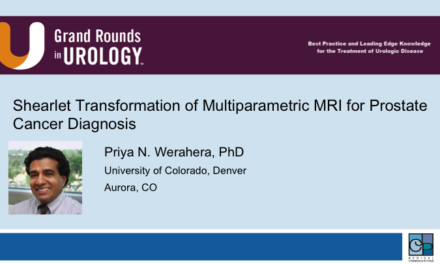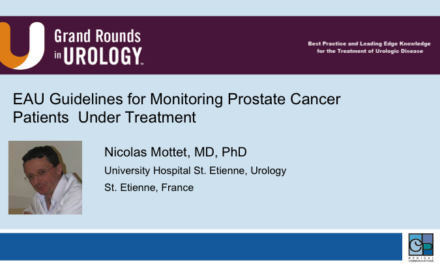Michael J. Zelefsky, MD, presented “Comparative Outcomes: Prostate Brachytherapy vs. EBRT vs. SBRT for Low/Intermediate Risk Disease” as part of a course on Prostate Brachytherapy released in 2021 and created by the American Brachytherapy Society in partnership with Grand Rounds in Urology.
How to cite: Zelefsky, Michael J. “Comparative Outcomes: Prostate Brachytherapy vs. EBRT vs. SBRT for Low/Intermediate Risk Disease.” September 2021. Accessed Apr 2024. https://grandroundsinurology.com/comparative-outcomes-prostate-brachytherapy-vs-ebrt-vs-sbrt-for-low-intermediate-risk-disease/
Comparative Outcomes: Prostate Brachytherapy vs. EBRT vs. SBRT for Low/Intermediate Risk Disease
As part of a special course on brachytherapy for prostate cancer from the American Brachytherapy Society (ABS) and Grand Rounds in Urology, Michael J. Zelefsky, MD, Vice Chair of Clinical Research in the Department of Radiation Oncology and Chief of the Brachytherapy Service at Memorial Sloan Kettering in New York City, compares outcomes for prostate brachytherapy vs. external-beam radiation therapy (EBRT) vs. stereotactic body radiotherapy (SBRT) for patients with low- and intermediate-risk disease. Dr. Zelefsky explains that when comparing outcomes, the focus is on toxicity after therapy and the efficacy of therapy. He also notes several limitations in comparing different radiotherapeutic modalities as well as dramatic technological innovation over the last 10 years that have greatly improved radiotherapy delivery. While this has been revolutionary in the treatment of disease, it creates what he calls “a moving target” when comparing outcomes because of the difficulty in comparing studies completed at various points in this technological revolution. Dr. Zelefsky cites a comparative study of patient-reported quality-of-life (QOL) outcomes after SBRT, low-dose-rate (LDR) brachytherapy, and high-dose-rate (HDR) brachytherapy for prostate cancer. Another study compared patient-reported QOL following SBRT and conventionally fractionated EBRT compared with active surveillance in those with localized prostate cancer. He reviews highlights from five-year outcomes of the HYPO-RT-PC randomized, non-inferiority, phase 3 trial that examined ultra-hypofractionated versus conventionally fractionated radiotherapy for prostate cancer, including that the estimated failure-free survival at five years was 84 percent in both treatment groups. Dr. Zelefsky notes that genitourinary and gastrointestinal toxicity were similar in both groups as well. He presents a chart illustrating urinary symptoms post-therapy which shows that while LDR has a higher rate of acute grade two urinary symptoms, late urinary toxicity and late urinary incontinence are similar across LDR, EBRT, and SBRT. Dr. Zelefsky outlines the benefits of prostate brachytherapy for favorable and intermediate-risk disease, pointing out that it has the most ablative potential, prostate-specific antigen nadirs are generally significantly lower than with EBRT, and post-treatment biopsy outcomes are positive in just seven percent of patients. He compares this with data showing that EBRT results in post-treatment positive biopsy outcomes of approximately 25-30 percent and data showing that SBRT with a dose of 40 Gy results in post-treatment positive biopsy outcomes of 11 percent. Dr. Zelefsky suggests then that SBRT has more ablative potential than EBRT but that brachytherapy has even more ablative potential than either of these. Finally, Dr. Zelefsky summarizes by explaining how these findings help inform patient decisions and treatment selection, pointing out that prostate brachytherapy may be preferable for the younger patient with few urinary symptoms, while patients with significant urinary symptoms may prefer SBRT. Patients with a larger prostate who may otherwise require downsizing with ADT may opt for SBRT over brachytherapy.
For more on brachytherapy, check out the first module of the free Prostate Brachytherapy course from GRU and the American Brachytherapy Society.




